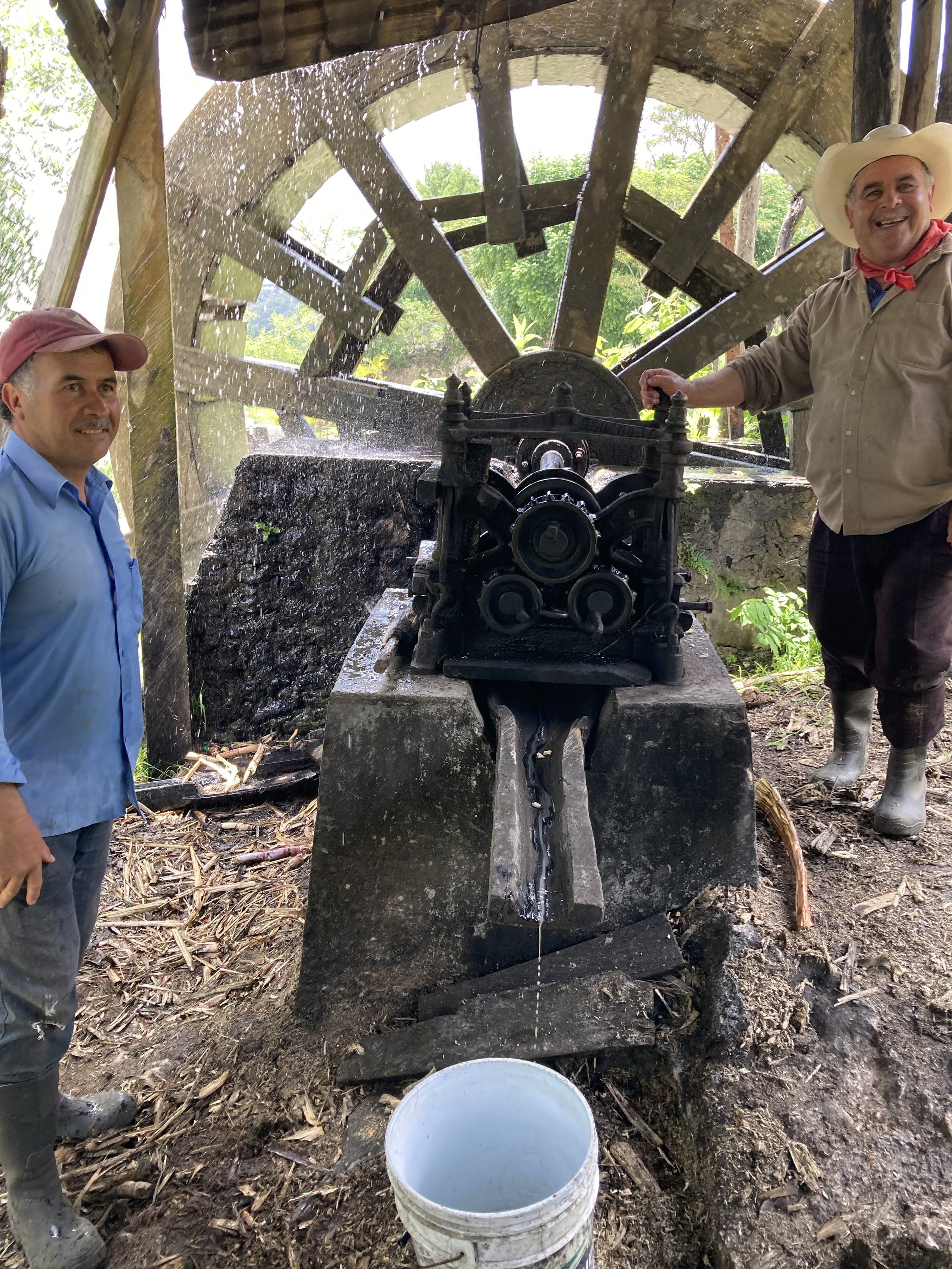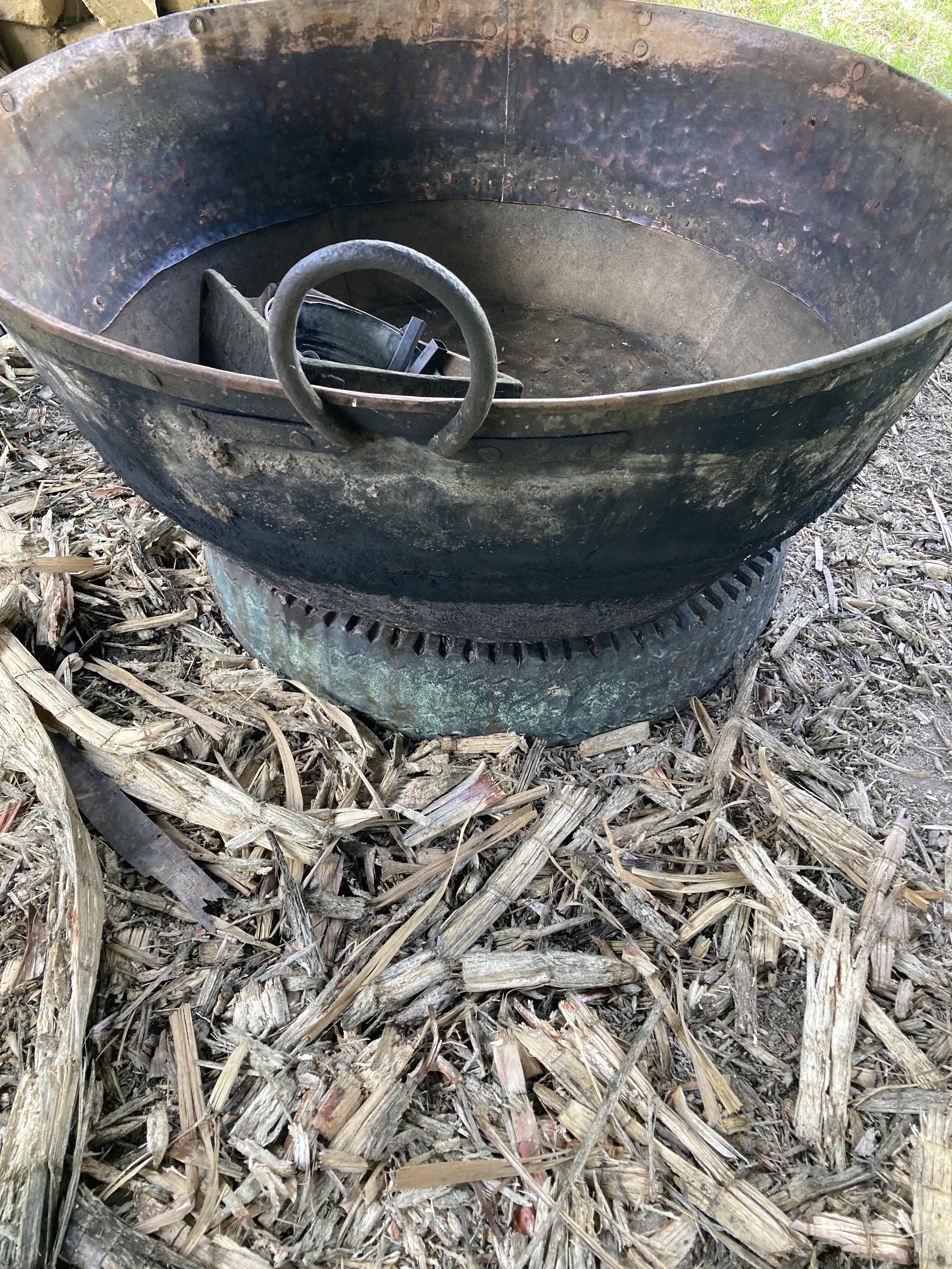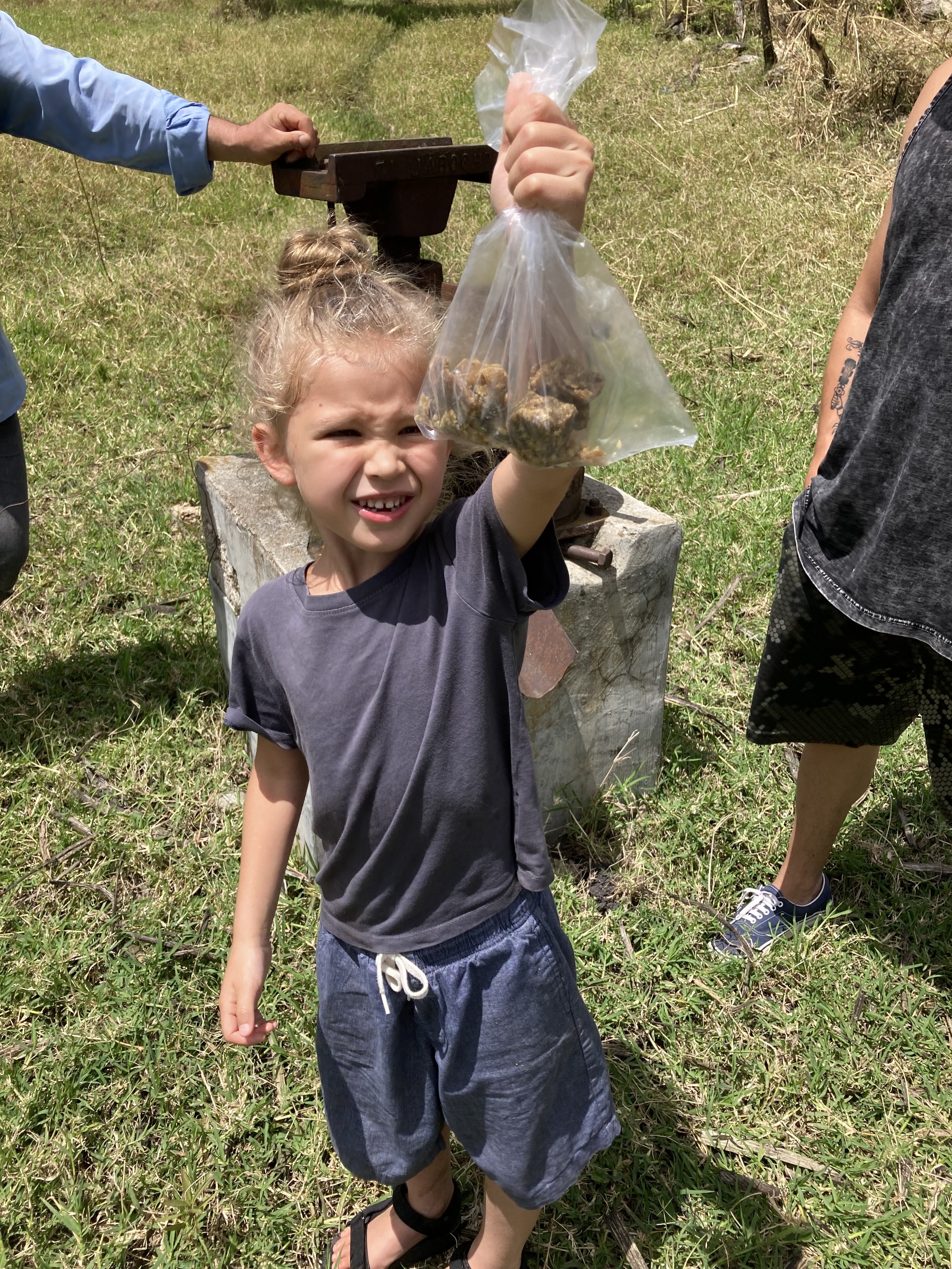Panela - Ultra Artesanal Cane Sugar
Tzimol, Chiapas
…is a small community outside of Comitan on the road to the Guatemalan border. For generations people have been crafting ‘panela’ or ‘piloncillo’ a type of artesanal sugar cane that is still made by hand and sometimes powered by water. Chiapas has so much water! Tons of lakes, rivers, waterfalls and even cenotes; which are typically associated with the Yucatán Peninsula. More than half of Mexicos hydro-electricity comes from Chiapas, while many homes run on wood fires.
Tasting Sugar
We first traveled to Tzimol to rest and because of its location adventure to a few spots we were curious about in Southern Chiapas. Our time was spent living in a cabana on a piece of land that was outside of the small town in the hillside. Next door was a cane sugar farm and once they heard we were chocolate makers working with cacao from Chiapas they invited us over for a tasting. One afternoon we followed the stream to our neighbors farm, catching fresh water crabs and fat brown toads along the way. Sugar cane grown this way on small plots amid other crops encourages biodiversity.
Three Generations
The brothers operating the farm were the third generation of their family to do so. Because of their strategic position and as a result of clever engineering, they were 100% water powered. This means that all of the sugar they produce is pressed using a machine that was powered with the water wheel you see in this image. It was a source of pride for them not to depend on electricity for their mill. Past generation used had a dry land mill that crushed the cane as a donkey pulled the mechanics in a circular path around the mill. Hard work for the donkey and much less efficient than than the water wheel the new generation uses.
Starting with Cane
After planting, cultivating and harvesting the canes are fed into the press which crushes them flat, releasing their juices. The sweet, cloudy juices are collected at the end of the press in a large tub - One cane produces about a cup of liquid juices. Aldo and Mattias pressed enough for us all to have a glass, the adults with a splash of Comiteco - a local distillation of the agave plant that hints at rum, aguardiente or even mezcal. After an international boom and intense competition with the northern tequila producers, Comiteco distilleries are back in production after more than fifty years, with new plans for sustainability and longevity.
Zero Waste
After pressing the sugar cane the fibers left over dry out and become the fuel for fires that reduce the sweet liquid. Drained into this large pot, a large fire is built underneath and functions to reduce the water content in the juice slowly over many hours. The first fire is lit before dawn and the pot bubbles along into the afternoon before being skimmed and ready for pouring into molds. The ash and leftover plant matter is used to fertilize the cane fields for the next round of cane to grow. The intentional underdevelopment of Chiapas has left many cane growers without a significant market for their excellent product. We hope to continue to develop partnership with them to offer high quality panela in the Fortuna Bodega.
Fresh Organic Panela
The history of sugar farming in Mexico will be explored in a future blog post … there is a lot to discuss. Commodities like sugar and coffee are products of colonial violence but they are also an integral part of local economies.
For now, if you are going to stock sugar in your kitchen we believe its best form is this- chunks of low refined, zero waste, organically grown, family farmed panela. In its fresh form panela is easy to shave with a regular kitchen knife - and added to coffees, yogurts, smoothies - contirbutes a delicious depth that is impossible to find in industrial sugar. Apart from local honey it is what we have in our kitchen to add sweetness when needed.






